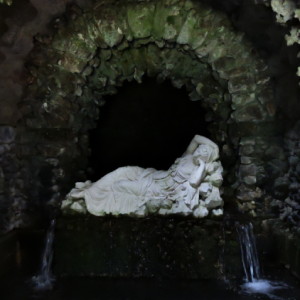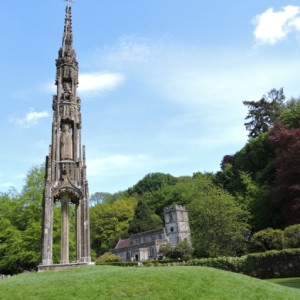"A ruinous & superstitious Relick"
THE BRISTOL HIGH CROSS originally dated 1373 but in fact dating from between the early 15th and early 17th centuries, was acquired by Henry Hoare in 1764 and rebuilt in its present location at Stourhead in 1765. The cross originally stood at the crossroads at the centre of medieval Bristol, but was taken down in 1733 at the behest of the citizenry who, in the petition calling for its removal, described it as “a ruinous and superstitious Relick, which is at present a public nuisance”. Removed to College Green in 1736, the cross was taken down in 1762, because people complained they couldn't walk abreast and ended up in the care of the Dean and Chapter of the Cathedral. Hoare came across the cross in bits in a corner of the cathedral and secured the permission of his friend, Dean Cutts Barton, to remove it and rebuild it. It was conveyed to Stourhead in six wagons in October 1764, but was only rebuilt, with a solid base, at the end of the following year.
The date of 1373 is given in Hoare's 'History of modern Wiltshire: hundred of Mere', but more recent accounts state that the lower part of the cross is of the early fifteenth century, restored in 1525 and with a new tier with extra statues added in 1633. Hoare's intention in acquiring the cross and in placing it near to the parish church and the houses opposite was to create an “English” vista from the Pantheon.
The cross was restored in 1894 and in 1981, when the solid base was taken out, and the statues in the lower tier were removed to the Victoria and Albert Museum, to be replaced with carved stone figures.
More extras




Comments
Sign in or get an account to comment.


